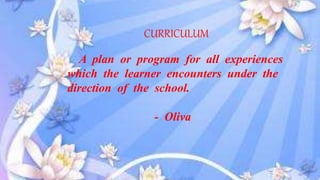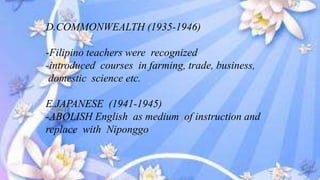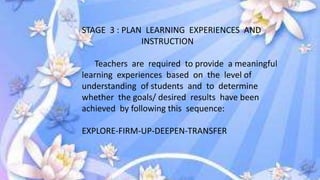The document discusses curriculum development in the Philippines from pre-Spanish times to the present. It covers the different curriculum devised under Spanish, American, Japanese, and post-independence rule. Major concepts discussed include curriculum definition, elements, types, influences, patterns, and the process of curriculum development. The document also outlines frameworks for curriculum design like Understanding by Design and features of the Enhanced K to 12 Basic Education Program recently implemented in the Philippines.













































